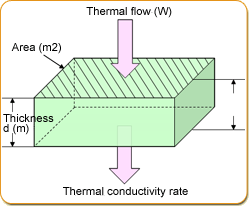Thermal
Properties

The most
important thermal property in minerals is
thermal conductivity. Thermal conductivity is
the property of a specific material or mineral
to conduct heat. The thermal conductivity rate
is defined as the ease of conducting heat.
This is also know as the heat thermal flow
density. Minerals with a higher rate of
thermal conductivity have more heat transfer
in a shorter amount of time then minerals with
a lower rate. This means that the higher the
rate the better that specific material or
mineral conducts heat. A common material in
buildings located in a cold climate have
thermal insulators. This means they use
material with a low thermal conductivity. This
reduces the cost of heating in the winter
because instead of letting heat through it
keeps the heat inside.
thermal conductance= kA/L
k= plate of thermal conductivity
A= area
L= thickness
|
 |
Another property that is
important is that of thermal expansion. This
is what happens when a rock becomes heated. In
most cases the material will expand causing
more stress on the object. Thermal expansion
is a phenomenon; it occurs under conditions
with an increasing temperature. If expansion
happens under increasing temperatures, this
means that contracting will occur in
conditions of decreasing temperatures.
The average coefficient of linear expansion is
as follows,
|
|
|